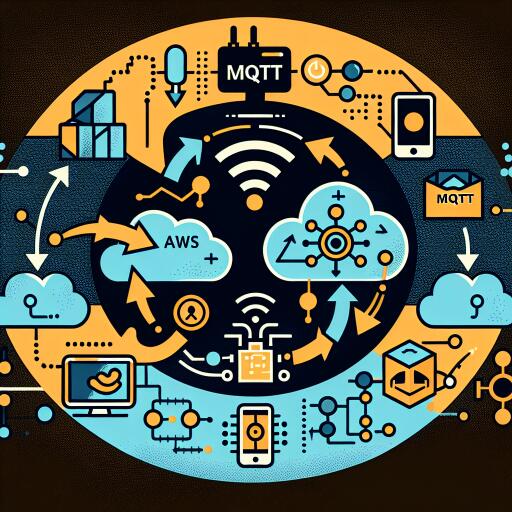Integrating Your Microcontroller with AWS IoT Core Using MicroPython
Revolutionizing IoT projects, particularly in the realm of automated pet care like the intuitive Cat Feeder system, requires not just innovative ideas but also the smooth integration of software and hardware. This transition is bolstered by leveraging the power of the Amazon Web Services (AWS) Cloud Development Kit (CDK), alongside MicroPython, to enhance productivity and streamline development processes.
Embracing MicroPython for IoT
Transitioning from Arduino-based C++ development to MicroPython marks a significant shift towards utilizing a language familiar to many developers. MicroPython, an optimized subset of Python designed for constrained environments such as microcontrollers, offers a gateway to efficient IoT device programming. This shift is especially beneficial for those seeking to dive back into projects with minimal relearning curves. Recognizable benefits include the vast support for MicroPython across various ESP32 devices, enabling seamless integration and development across a wide array of IoT devices.
The Path to MicroPython Enlightenment
Initiating this journey requires preparing your ESP32 devices by flashing them with the latest MicroPython firmware. This process entails connecting your microcontroller to a computer and identifying its port, followed by utilizing the esptool to upload the MicroPython firmware. Subsequent to this setup, configuring your development environment, for instance through Thonny IDE, aligns the device for programming and interaction.
Integrating with AWS IoT Core
The crux of enabling IoT devices to communicate with the AWS IoT Core lies in the MQTT protocol, a lightweight messaging system for small devices and low-bandwidth situations. Successfully authenticating your microcontroller with AWS IoT Core necessitates a unique set of certificates and keys. For developers yet to acquire these, structuring an AWS IoT Core solution through AWS CDK provides an orchestrated approach to obtain necessary credentials, facilitating both the sending and receiving of MQTT messages.
Having configured the necessary certificates and converted them to the DER format for compact storage, developers can embark on uploading the MicroPython code into their microcontroller. This code is responsible for establishing MQTT communication, allowing devices to publish and subscribe to topics within AWS IoT Core. Demonstrating this capability can be as straightforward as generating a mock message indicating a percentage value for a hypothetical “food capacity”, or receiving commands from AWS IoT Core to trigger specific actions on the device.
Verifying MQTT Communication
To ensure the seamless flow of messages between your microcontroller and AWS IoT Core, a verification step — utilising the AWS Console’s MQTT test client — reveals the real-time message exchange. This validation not only confirms the operational status of the MQTT communication channel but also exemplifies how effortlessly commands can be dispatched and acted upon by IoT devices, paving the way for intricate automation in projects like the Cat Feeder system.
Conclusion
The amalgamation of AWS IoT Core with MicroPython on ESP32 devices underscores a significant leap towards democratizing IoT development. This synergistic pair empowers developers with tools and protocols essential for bridging the gap between cloud services and physical IoT devices. As demonstrated through the Cat Feeder project, such integrations not only simplify the development process but also expand the horizons for innovative IoT solutions in everyday applications.










